AIG Women’s Open 2024: St Andrews Old Course Guide
Last updated:
The AIG Women’s British Open returns to St Andrews for a third time since the tournament’s first playing in 1976. Here’s our hole-by-hole guide to world-renowned Old Course where the final Major champion of 2024 will be crowned.
The 48th edition of the AIG Women’s British Open will be held at the most iconic course in golf for the third time in its history. Mexican Lorena Ochoa first lifted the trophy in front of the R&A clubhouse in 2007, before American Stacy Lewis’s two-stroke triumph in 2013.
The hallowed turf of St Andrews is set to crown its 32nd Open Champion on Sunday 25th August, having seen 29 previous ‘Champion Golfers of the Year’ – 29 of them men – beginning with Tom Kidd in 1873 and last with Cam Smith in 2022.
St Andrews represents the last of five chances in 2024 for the elite of the women’s game to secure themselves a Major championship. Nelly Korda capitalized on a dominant start to the year with victory at the Chevron Championship before Japan’s Yuka Saso and Ayaka Furue triumphed at the US Open and Evian Championship, either side of Korean Amy Yang’s win at the PGA Championship.
France’s Celine Boutier was Europe’s last European Major winner in 2023 at the Evian Championship, one of only three European Major champions since 2020, while England’s Georgia Hall was the last home victor at the British Open, winning at Royal Lytham in 2018.

And much like the 129-yard fairway on the first hole, 2024’s pursuit for the title is wide-open. But despite St Andrews’ seeming vulnerability with its famously large double greens and a host of relatively short par-4s, players will need to keep their wits about them, as much like the Scottish weather, the Old Course ‘never stands still’. Those who fail to adapt will likely be catching an early flight home as discovered by many of the world’s best men at Royal Troon just a month earlier.
To find out what exactly what the 144-woman field will face, we asked St Andrews caddie John Boyne to give us a tour. John has been a bagman at the Old Course for over 20 years and is the founder of Caddie Golf Tours, so what he doesn’t know about the famous course really isn’t worth knowing.

AIG Women’s Open 2024: St Andrews – Old Course Guide
Par 72 | 6,784 yards
Hole 1: Burn | Par 4 | 375 yards
The widest fairway in golf! Combing the 1st and 18th holes, it is a remarkable 129 yards wide… not that it stopped Ian Baker-Finch hooking his opening tee shot out of bounds in 1990.
This really should be a relatively straightforward opening hole; a par 4 with the golfer’s tee shot heading down the widest fairway in championship golf, close to 130 yards wide. There are no bunkers, no trees, and absolutely no excuse for missing it!
The desired landing area is left of center of the fairway at the lone gorse bush to the right of the little bridge that crosses the Swilcan Burn – or as Lee Trevino put it, “That darn creek”. A drive up to 245 yards should be more than enough and leave you looking at an approach of 90-100 yards to the front edge of the green, plus the pin position.
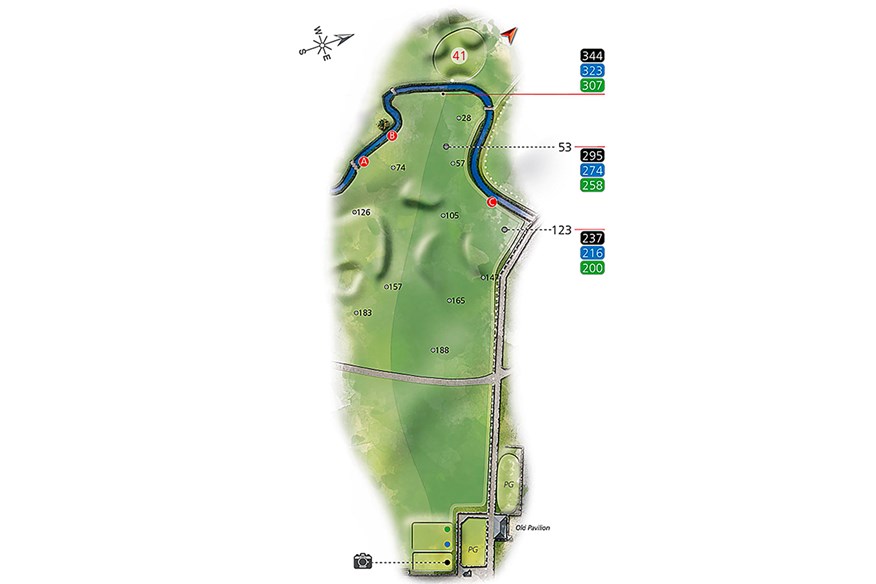
Hole 2: Dyke | Par 4 | 400 yards
After being lengthened by almost 40 yards ahead of the 2005 Open, the tee box now finds itself just to the right of the St Andrews Ladies’ Putting Green, more commonly known as the Himalayas.
The drive plays blind, a common theme for the next six holes, and must be threaded between Cheape’s bunker on the left and smatterings of gorse (and bunkers) on the right.
The subsequent approach shot plays to the first of seven double greens on the course. Only holes 1, 9, 17, and 18 have their own green complexes.
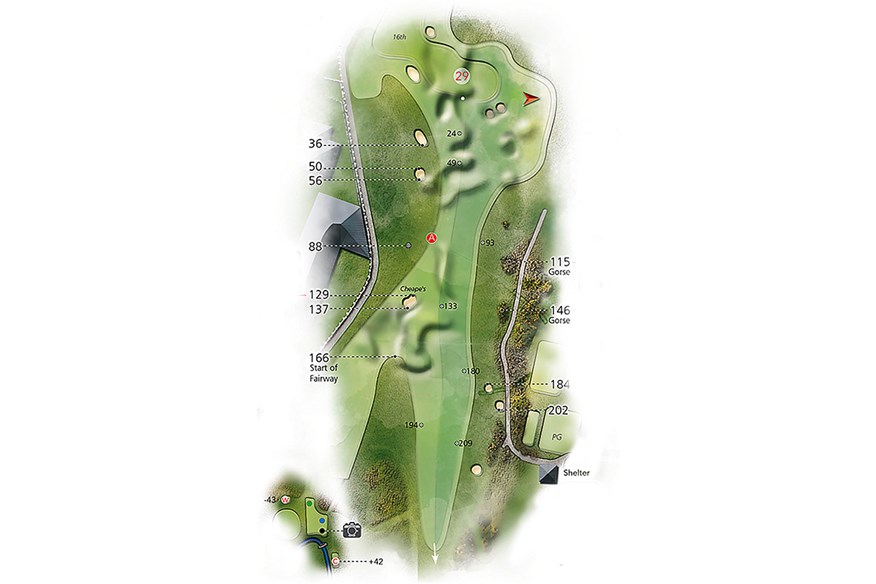
Hole 3: Cartgate (Out) | Par 4 | 366 yards
This one should see the longer hitters get very close, with a favorable wind, front tee, and a kind bounce.
It helps that the landing area is enormous, though most players tend to lay back and play for position, left of the three-pot bunkers that line the first cut on the right. It is the riskier line, but go too far left and you start flirting with the crescent-shaped Cartgate bunker, which fronts the entire left half of the green.
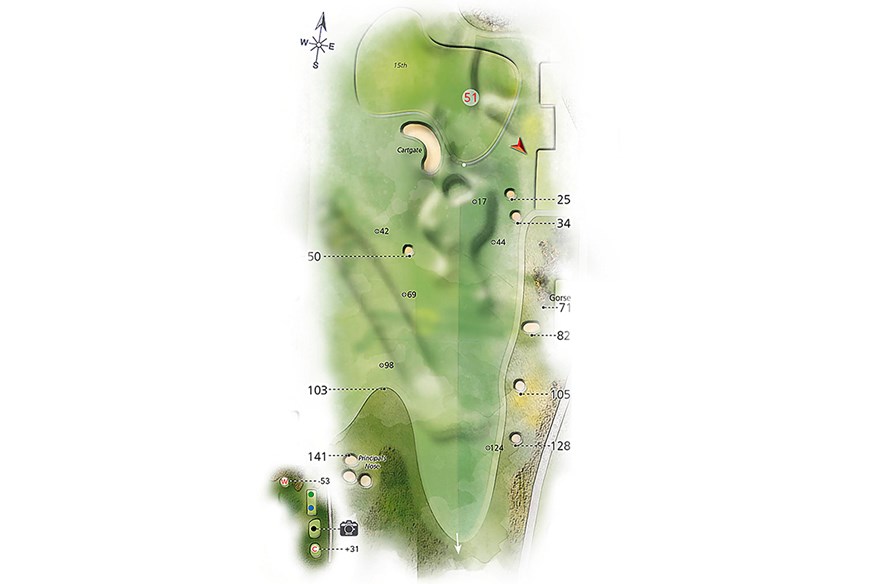
Hole 4: Ginger Beer | Par 4 | 413 yards
Regarded as the toughest par 4 on the front nine, it starts with a 210-yard carry – usually into wind – over an eight-foot-high mound to another expansive fairway, which merges with the 15th. There is another route down the right side, to a thin landing strip of fairway where two small pot bunkers eat into the right side of the first cut.
Sam Snead, 1946 Open Champion, said on picking this line from the tee that you had “to walk in single file”. The approach shot plays over a mound and must avoid bunkers right and left, as well as two more at the rear which come into play with a back pin position.
This green slopes severely from back to front and has a large hog’s back running through the centre which can wreak havoc with club selection.
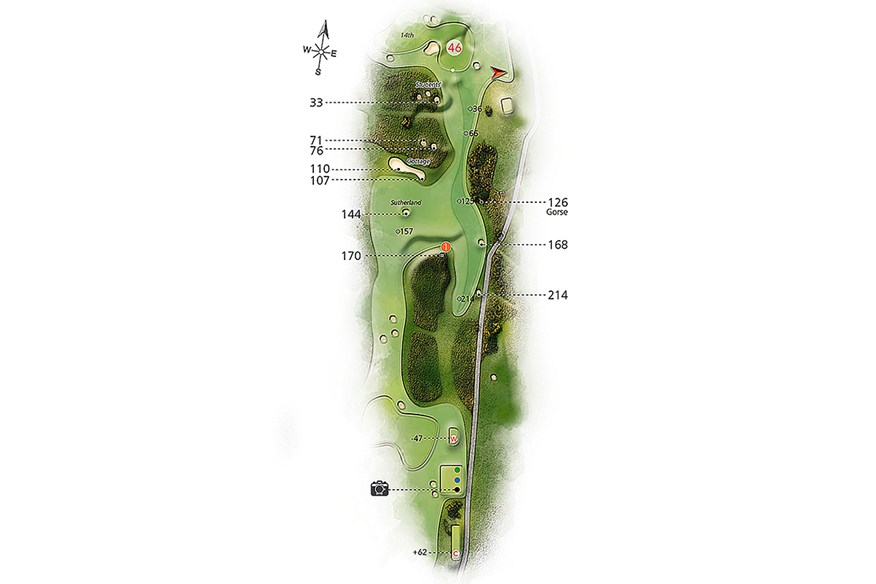
Hole 5: Hole O’Cross (Out) | Par 5 | 525 yards
In the right circumstances, the first four holes all offer opportunities but it is essential to stay patient on them as much greater riches await and the second set of holes need to bolster a score, not reuse one.
Assuming no big errors have been made early on, the 5th hole is the first of those golden chances to go low. If players walk off here with a par, or worse, they’ll be furious. Make birdie here and the short par 4s to come before and after the turn are suddenly full of hope. Anyone with their short irons dialed in at this stage will be flag hunting.
There’s a deep gully at the front of the green and if a player is a wee bit greedy in trying to get close to the front pins, there is the danger of slamming into the bank and rolling down into its base.
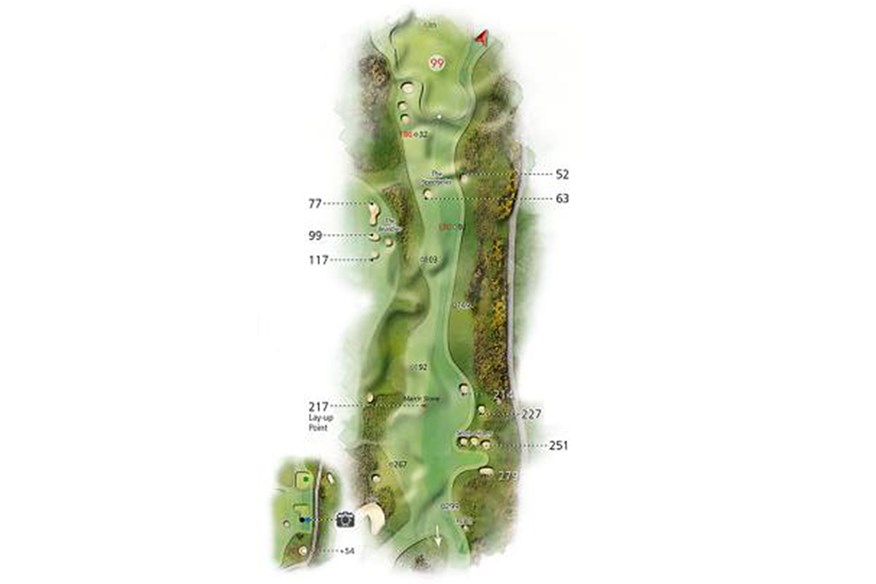
Hole 6: Heathery (Out) | Par 4 | 370 yards
A blind tee shot that can leave visitors a little baffled about where they are supposed to go. It’s a little different for the pros, though, as the grandstands and TV towers offer lines for them to take and it’s a pretty simple short par 4 that offers a solid birdie chance to most players.
The green only has a small, 5ft-deep gully at the front for protection. I’ve seen many golfers putt from the fairway and up through the gully to nestle close to the front flags.
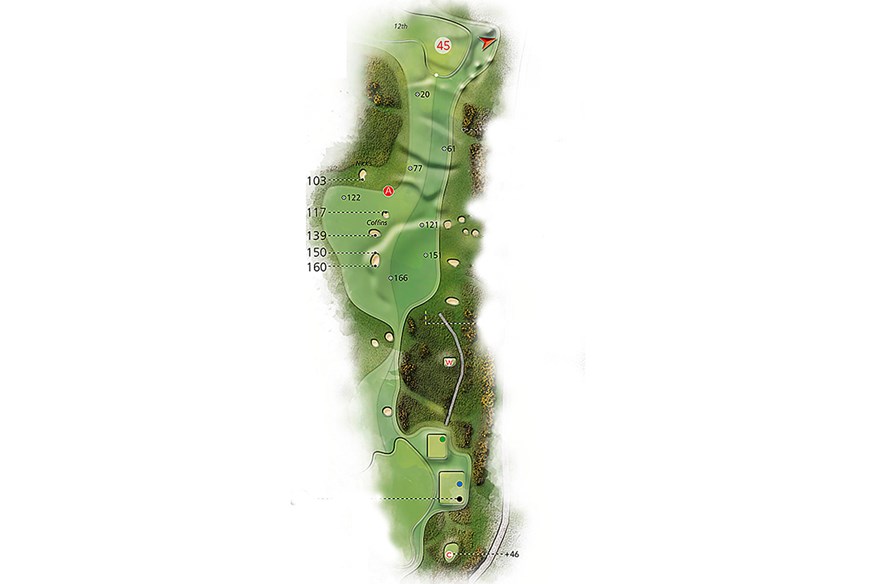
Hole 7: High (Out) | Par 4 | 361 yards
This is the only true dog-leg on the course and it represents the start of the ‘Loop’, a run of five short holes which dictates the in-and-out layout of the course.
In 2005, Tiger Woods tried to play for position with a 3-wood off the tee, but one firm bounce sent his ball careering into the Shell bunker, 13 yards short of the putting surface. He still escaped with a birdie after clearing the six-foot lip, but there’s a long list of players who haven’t been so lucky.
Most pros will be taking a long iron off the tee and aim beyond the mound where the 11th hole crisscrosses. From there, it looks like a simple pitch, but the green slopes severely from left to right.
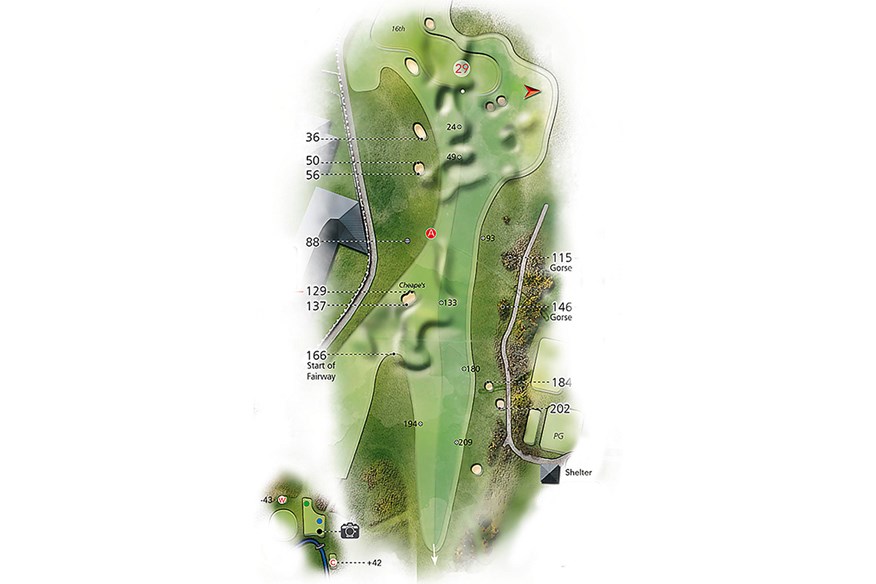
Hole 8: Short | Par 3 | 173 yards
A straightforward par 3. I expect two pin positions directly behind the front bunker, a third-placed on the
back raised tier section of the green with a steep downslope at the rear, leading to an often-forgotten small
pot bunker for those that chase this pin.
I suspect a new pin placement in the top left corner and it could lead to a few more four-putts, as Jordan Spieth suffered in 2015.
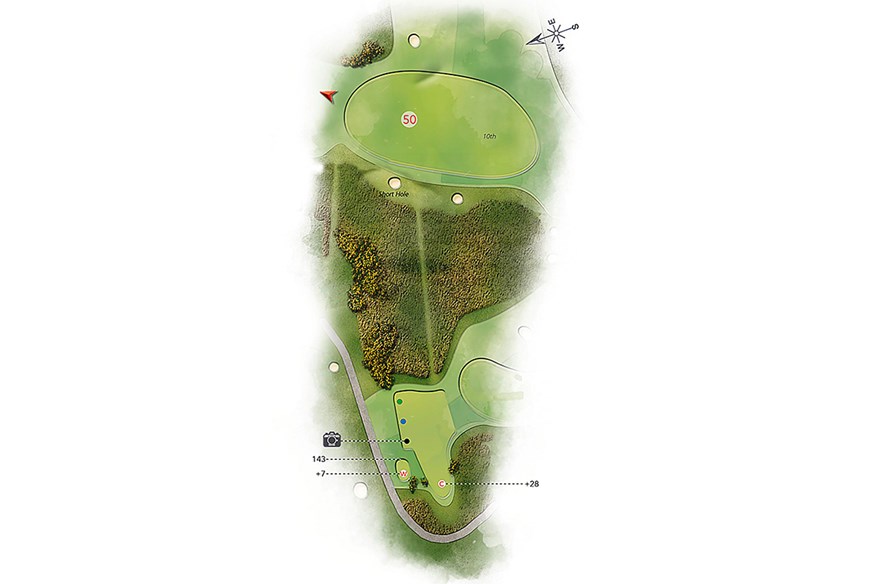
Hole 9: End | Par 4 | 349 yards
This is one of the holes where mere mortals get to drive from the same spot as the pros. Two bunkers 68 yards short of the green and the second 40 yards short should remain out of reach for most of the field although the first may come into play with a decent breeze behind.
A new bunker was introduced for the 2015 Open in the left rough, 30 yards short of the green. It’s known locally as Dawson’s Bunker, named after the past R&A Secretary.
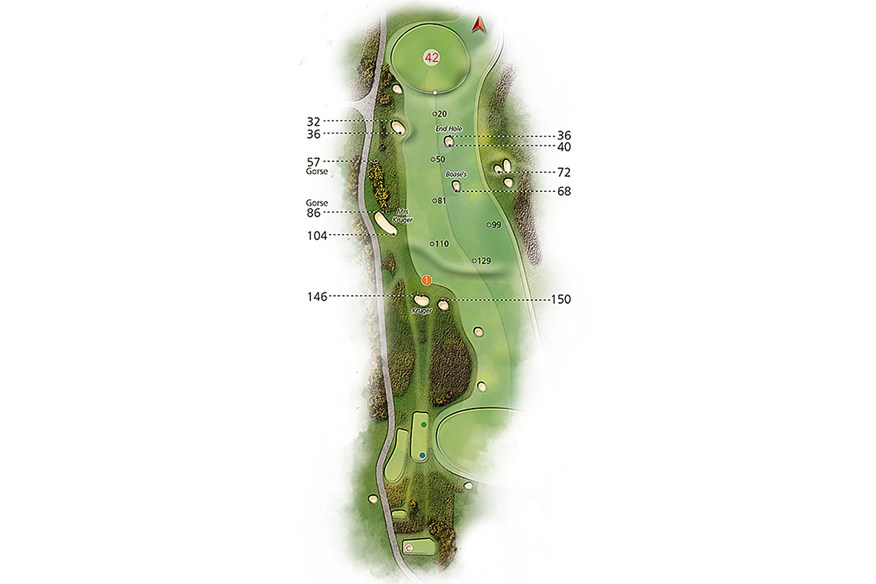
Hole 10: Bobby Jones | Par 4 | 341 yards
On this short par 4 expect the field to lay up to the bunkers approximately 80 yards short of the green down the right side, giving them a short wedge to the flag. Like the 9th, the safe play is to steer far away from the gorse which runs all the way down the left.
Behind The Hole
This hole is called Bobby Jones after locals petitioned the council to name a hole in the American amateur’s memory after his passing in 1971.
It was the last hole he officially completed when he first played the links in 1921. He stopped writing down his score after double-bogey 6s on the 9th & 10th and then found it difficult to extricate himself from Hill bunker beside the green on the left. For those curious, he was out in 43…
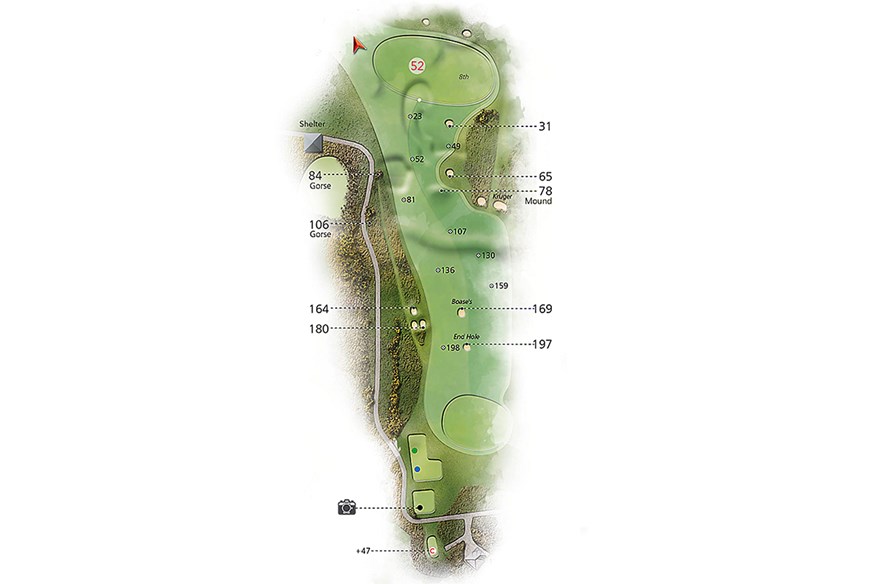
Hole 11: High (In) | Par 3 | 165 yards
One of the most famous and copied par 3s in world golf. Most caddies refer to it as the shortest par five in Scotland… From the tee, the golfer’s mind is occupied by two bunkers, Strath and Hill, that guard the entrance to a raised green that slopes steeply from back to front.
Two popular pin positions are cut just over the front pot bunker, Strath, which is 150 yards to carry. A small plateau at the rear right of the green traditionally has a flag at 176 yards – five paces further and you’re over the back in a steep gully.
There are no simple pin positions on the 11th, and when any kind of wind blows it can be difficult to get on the green, let alone complete a regulation two-putt.
Where To Watch
If you’re heading to St Andrews to watch The Open, you’ll find some of the best vantage points are around the Loop, with the stand on the 11th tee and the one behind the 11th and 7th green. They’re normally the prime spots because you can see a lot of golf from there.
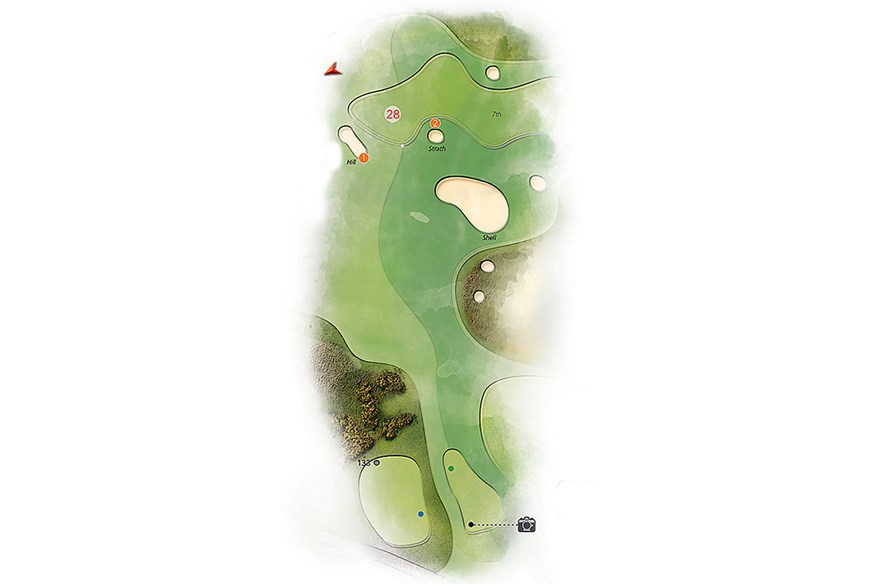
Hole 12: Heathery (In) | Par 4 | 351 yards
Set to play the same yardage as the men’s Open in 2022 the par-4 12th hole features four hidden bunkers camouflaged by the rolls of the fairway that could cause a few club selection headaches across the week.
The green has an excruciatingly small plateau, 12 paces at its widest point, on which to stop your ball. Legendary caddie Tip Anderson always said that his golfer, Arnold Palmer, was never too concerned about dropping off the back of the plateau as he believed it was an easier putt to read than the one up the steeper slope from the front of the green.
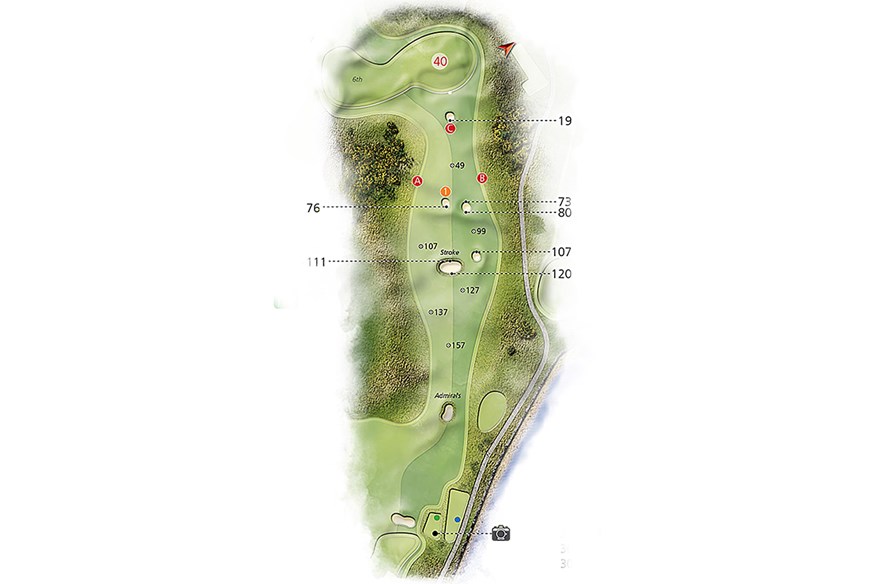
Hole 13: Hole O’Cross (In) | Par 4 | 430 yards
The par-4 13th hole looms large with the potential to be unlucky. There is rough long and right from the tee while the lie of the fairway kicks errant balls toward the threateningly deep pot bunkers.
he ideal line from the tee is over the middle Coffin bunker and onto the 6th fairway, giving a simpler approach to the flag, which will most likely be positioned behind the cavernous front right bunker on two competition days.
The town sits invitingly on the horizon at this point, but every shot demands full focus. It’s frighteningly easy to run up a big number. A good round can be transformed into a bad one. A bad round can quickly become a disastrous one.
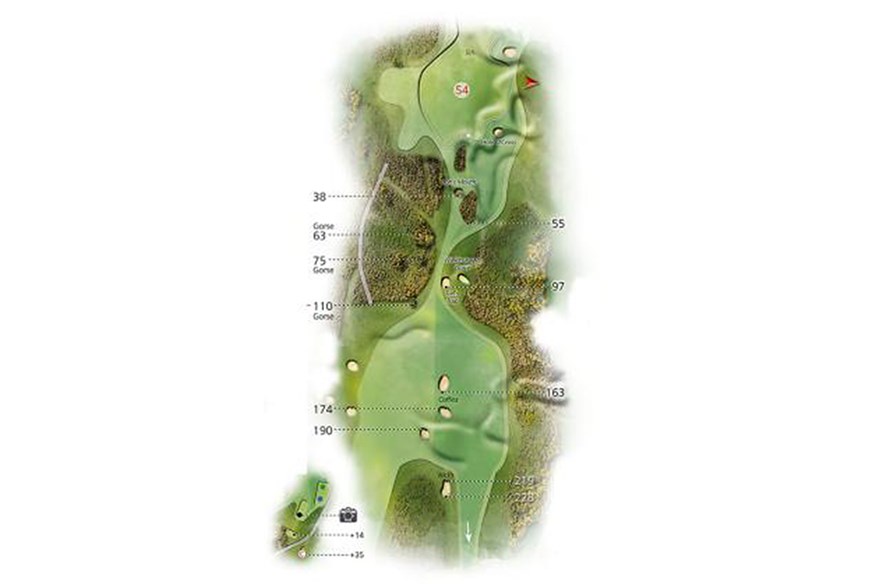
Hole 14: Long | Par 5 | 577 yards
This was another hole increased in length in 2005, making it the longest par 5 on the Open rota. It’s a marvelous hole with a variety of routes to the green, some that avoid the trouble and a few that court it. The modern pro tends to go direct, they cannot stop themselves!
The drive is across an OB wall with a minimum 200-yard carry, and over on the left side a set of four devilish bunkers, called The Beardies, the first at 240 and last at 285 yards, before players reach the sanctuary of the fairway, named Elysian Fields.
Avoid Hell
On the 14th, pros will go for the green in two over Hell bunker, 108 yards short of the green. Mere mortals tend to play left onto the adjacent par-5 5th fairway.
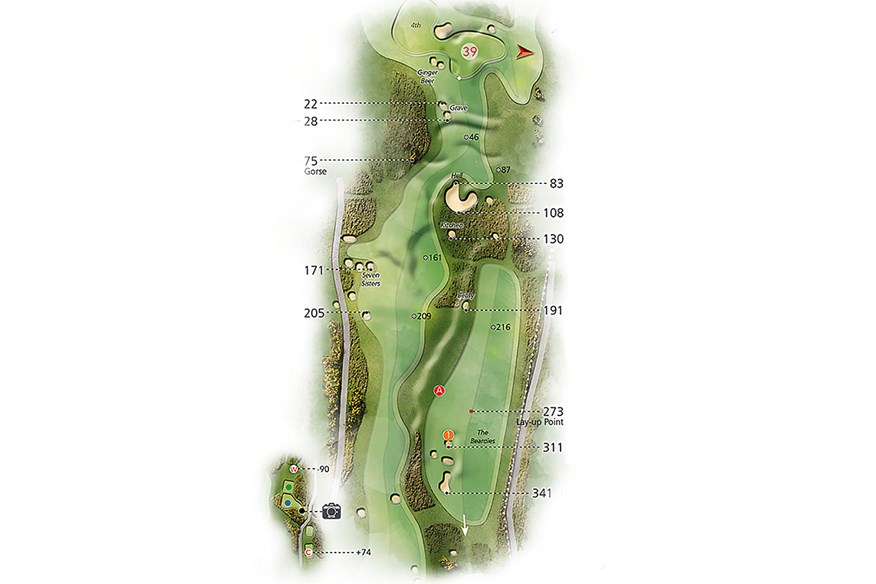
Hole 15: Cartgate (In) | Par 4 | 415 yards
Driver is not really necessary here as the fairway pinches in at 300 yards and can leave you with an awkward stance on the side of a hill.
A drive up to 280 yards will leave roughly 155 to the front of a deep green, where I’ve seen an extraordinary amount of approach shots land short.
A trio of bunkers creates the illusion of shortening the distance to the green. The golfer doesn’t believe what he is seeing, and even though he has the yardage, there is a tendency to play less than a full shot.
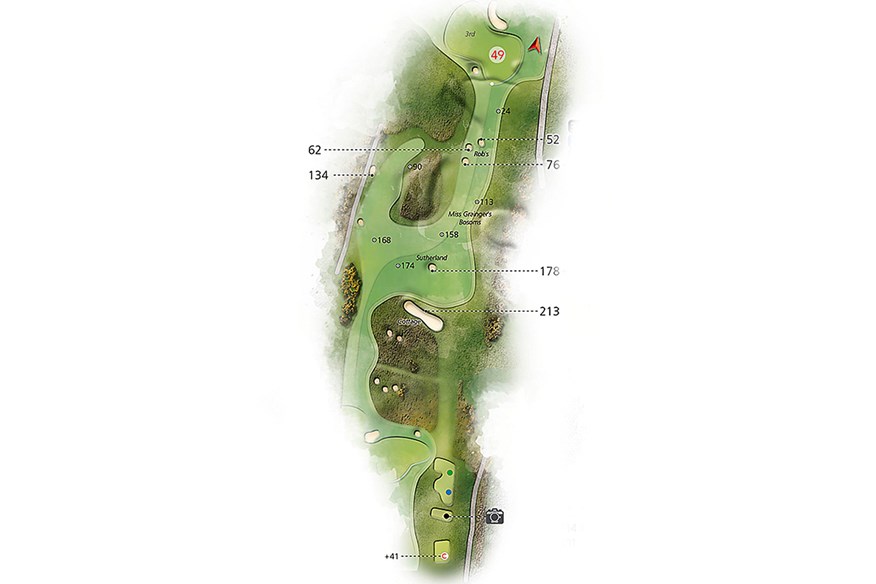
Hole 16: Corner of the Dyke | Par 4 | 380 yards
The pros don’t really like this hole. The tee box is hard against the OB fence on the right and there are three bunkers, known as the Principal’s Nose, at 140 yards from the green, with a sneaky wee pot bunker called Deacon Sime 40 yards beyond them.
Over the last decade, a ribbon of rough has been encroaching up the fairway 35 yards from the Principal’s Nose bunkers. If you look at old tournament footage before 2000 you’ll see the rough actually used to begin level with those bunkers. This now means golfers are faced with knocking a 210-yard fairway wood down the middle and leaving 170 to the middle.
Like so many on the back nine, the green is raised, with a four-foot ridge that starts front right, very close to the OB fence, and drives through the green by 17 paces.
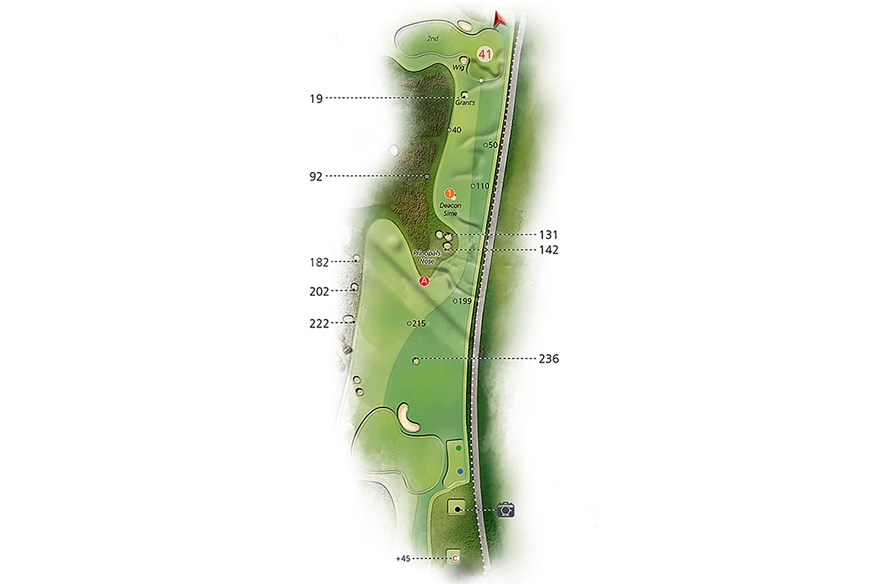
Hole 17: Road | Par 4 | 439 yards
When Stacey Lewis won in 2013, her second shot to 17 finished three feet from the flag. It was an exceptional blow. For most, however, the par-4 ‘Road’ is fraught with terror. The blind tee shot has to be played across the hotel outbuildings to an angled fairway. The long approach must avoid scuttling through the shallow green onto that famous road and also avoid the infamous Road Hole bunker short and left. there is no safe ‘leave’ and any approach that misses the green is in double-bogey territory.
The green itself has a noticeable camber on the right side that leads down to an ash path, an uneven Tarmac road, a bit of grass, and the OB wall. This is one of the three-putt greens on the Old Course, players generally missing on the low side and not realizing how much swing there is.
The Old Course Hotel has a new defence. Fed up with shelling out to repair roof tiles broken by errant tee shots on the nearby Road Hole, the hotel installed an ‘impact resistant’ rubber roof in 2016 to deflect any wayward balls.
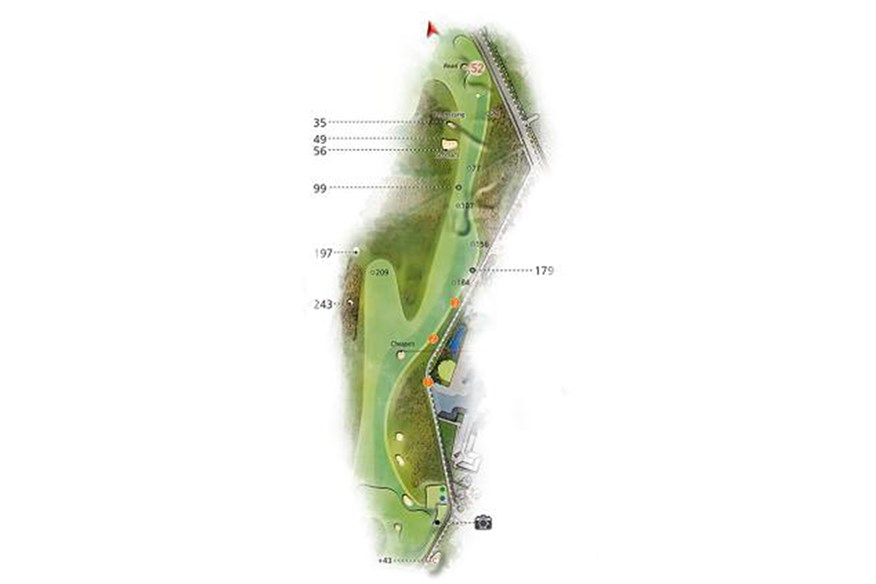
Hole 18: Tom Morris | Par 4 | 354 yards
To finish, one of the Old’s easiest par 4s. The safe play is to aim at the red clock on the right side of the R&A Clubhouse, but most pros try to drive the green, especially if they’re chasing.
The fairway is flat on the left side and offers a good stance, the right has many humps and bumps leading to the Valley of Sin, an eight-foot depression that sits at the front of the enormous green.
Jordan Spieth spun back into it when he chased the flag on his final round in 2015 and missed the play-off by a shot.
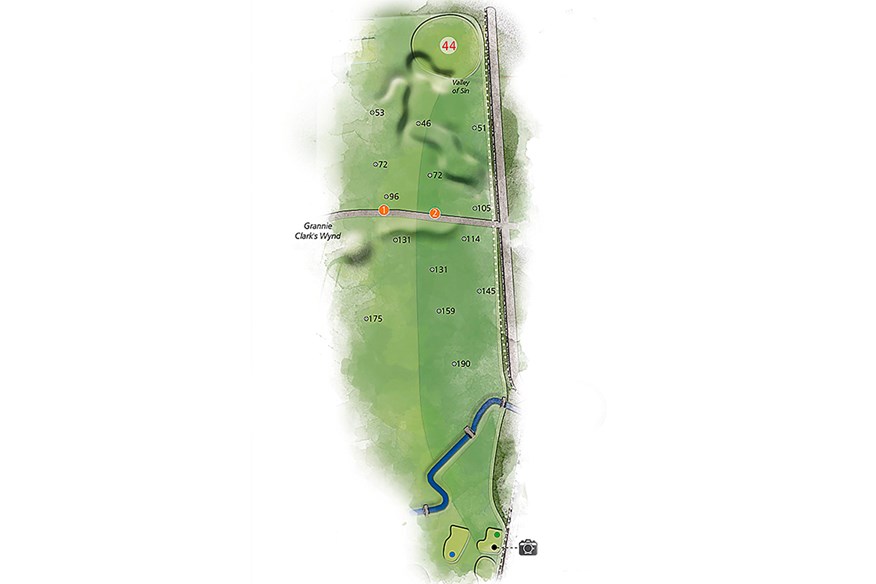
-
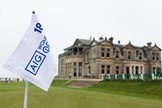 A hole-by-hole guide to St Andrews' Old Course, host of the 2024 Women's Open
A hole-by-hole guide to St Andrews' Old Course, host of the 2024 Women's Open
-
 St Andrews' Old Course will host the 2024 AIG Women's Open
St Andrews' Old Course will host the 2024 AIG Women's Open
-
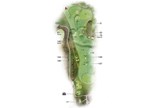 Hole 10 layout at St Andrews, Old Course
Hole 10 layout at St Andrews, Old Course
-
 Hole 11 layout at St Andrews, Old Course
Hole 11 layout at St Andrews, Old Course
-
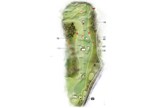 Hole 12 layout at St Andrews, Old Course
Hole 12 layout at St Andrews, Old Course
-
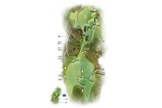 Hole 13 layout at St Andrews, Old Course
Hole 13 layout at St Andrews, Old Course
-
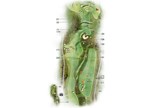 Hole 14 layout at St Andrews, Old Course
Hole 14 layout at St Andrews, Old Course
-
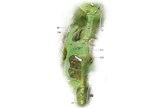 Hole 15 layout at St Andrews, Old Course
Hole 15 layout at St Andrews, Old Course
-
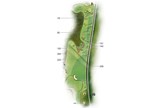 Hole 16 layout at St Andrews, Old Course
Hole 16 layout at St Andrews, Old Course
-
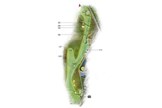 Hole 17 layout at St Andrews, Old Course
Hole 17 layout at St Andrews, Old Course
-
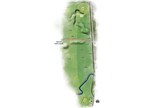 Hole 18 layout at St Andrews, Old Course
Hole 18 layout at St Andrews, Old Course
-
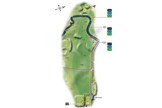 Hole 1 layout at St Andrews, Old Course
Hole 1 layout at St Andrews, Old Course
-
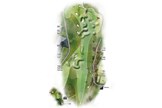 Hole 2 layout at St Andrews, Old Course
Hole 2 layout at St Andrews, Old Course
-
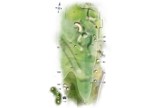 Hole 3 layout at St Andrews, Old Course
Hole 3 layout at St Andrews, Old Course
-
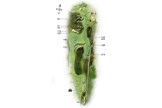 Hole 4 layout at St Andrews, Old Course
Hole 4 layout at St Andrews, Old Course
-
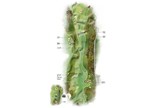 Hole 5 layout at St Andrews, Old Course
Hole 5 layout at St Andrews, Old Course
-
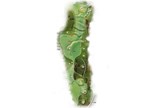 Hole 6 layout at St Andrews, Old Course
Hole 6 layout at St Andrews, Old Course
-
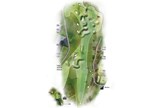 Hole 7 layout at St Andrews, Old Course
Hole 7 layout at St Andrews, Old Course
-
 Hole 8 layout at St Andrews, Old Course
Hole 8 layout at St Andrews, Old Course
-
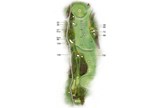 Hole 9 layout at St Andrews, Old Course
Hole 9 layout at St Andrews, Old Course
